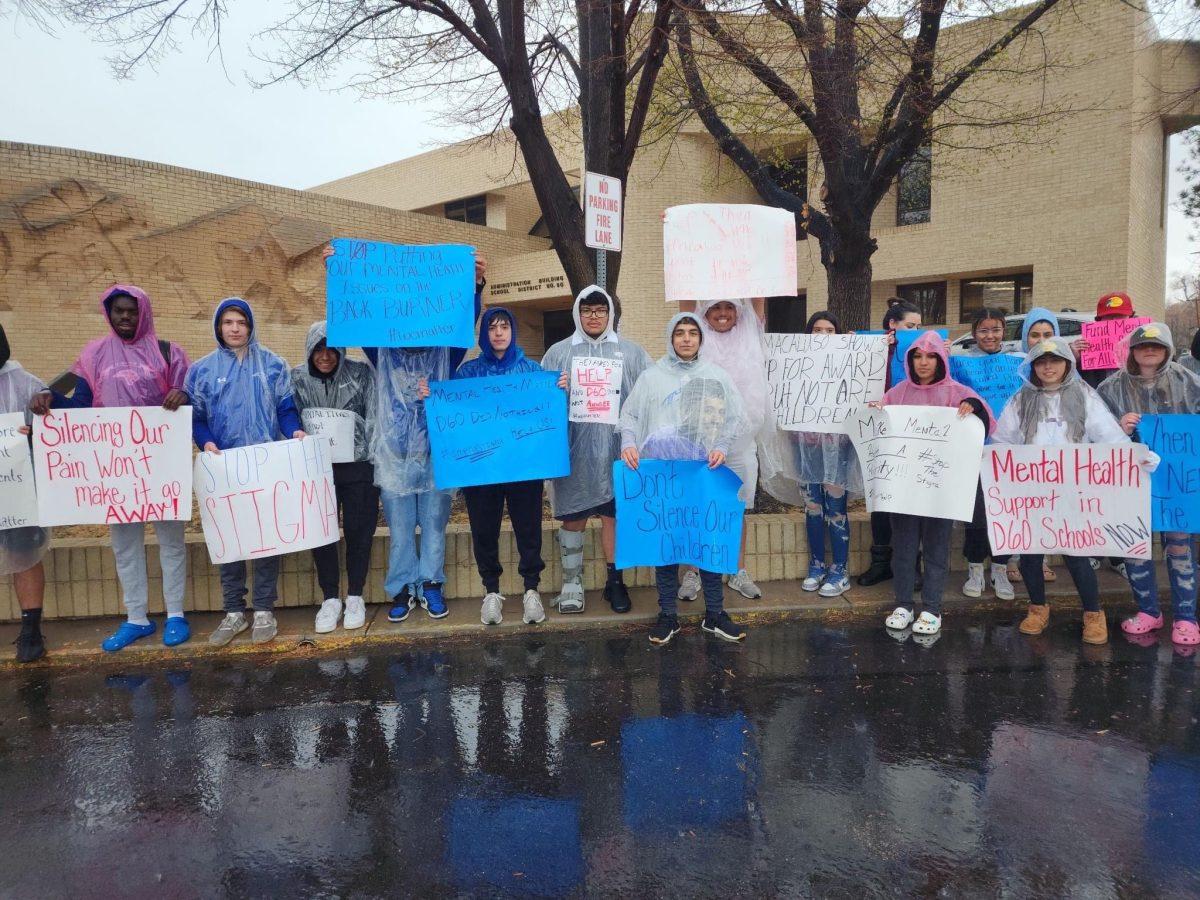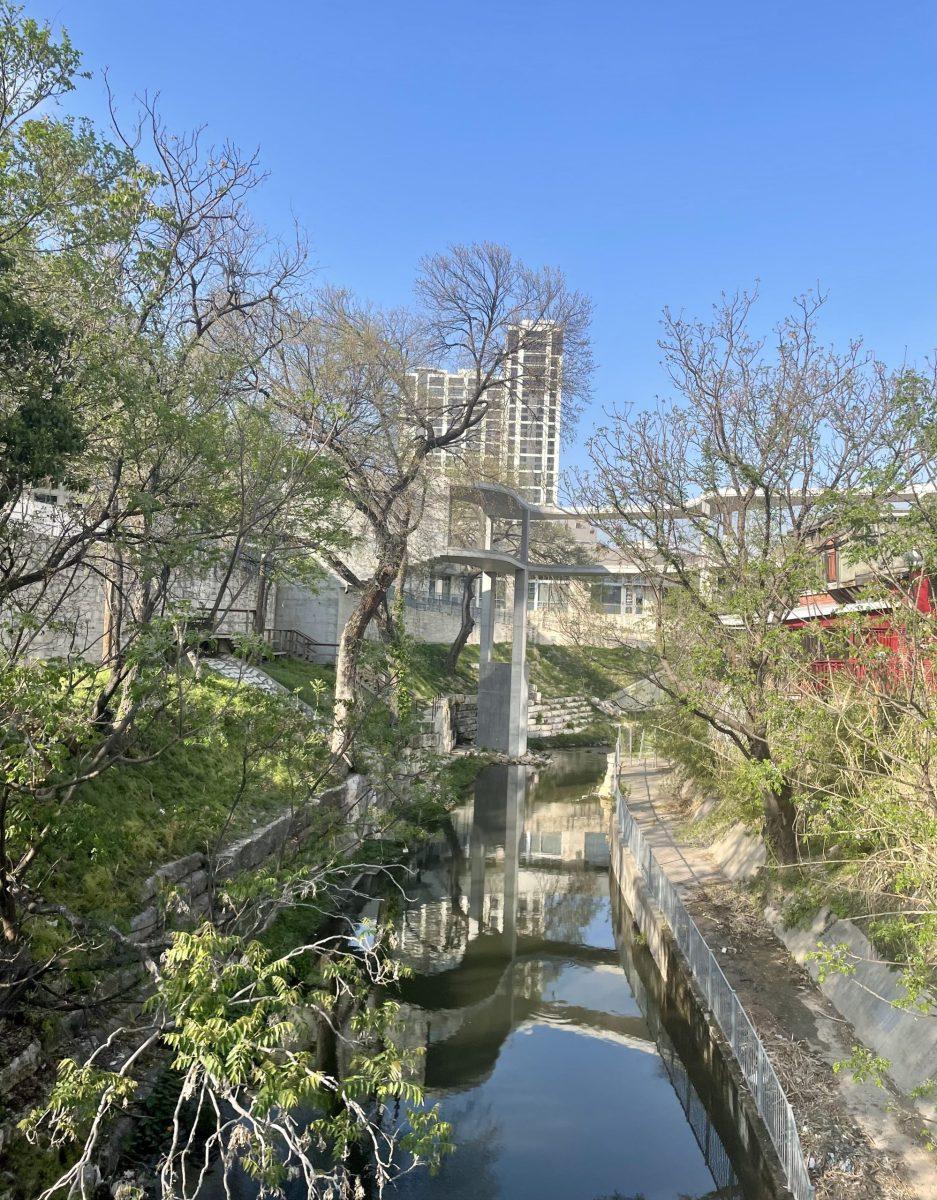CORRECTION: It was brought to the attention of The TODAY after the May issue was published that Pueblo School District 60 has plans and resources to assist students with their mental health. At the time of publication, our reporter was unable to meet with a member of the district, but we are in communication to meet with a representative soon. The editorial team also inappropriately sectioned this article as life & style when it is an opinion piece. The article is sectioned correctly online but not in the May print edition. The up-to-date and relevant article can be found on our website below.
The TODAY is committed to the clarity and accuracy of reporting and storytelling. The TODAY apologizes for any inconvenience or confusion caused. Don’t hesitate to contact us if you have an issue that needs to be reported, a correction, or a comment.
Contact us at [email protected]
By Angel Palma
On Tues., April 25, fellow students and family members of recently passed Erric Lopez Jr. stood in the pouring rain outside the administration building of Pueblo School District 60. Those outside the building wanted to speak out against not feeling heard regarding mental health within the district.
Past students, parents, faculty, and staff have noticed that the district has been handing out what they would describe as empty words and broken promises to the Pueblo community. Tee Lopez, the mother of Erric, stated, “I did get a call from District 60 and was assured that they do have some things in progress as of now.”
Yet, when Lopez asked for assemblies to help bring awareness around mental health and suicide, she claimed that the school and district offered nothing.
Feelings of anger were expressed by local Pueblo residents and students enrolled at District 60 schools. They feel nothing is being done in terms of any assistance when it comes to the student’s mental health. Residents and students interviewed felt the district should have put in more time than they had hoped.
Students say that when they tried talking about what happened to Erric, they were discouraged from speaking about the matter.
“It’s not fair that a boy who was so well loved by so many in our community had to lose his life to suicide for us to be made aware,” said Lopez. “My baby’s life mattered! The district knew of the high rates for years and still had done nothing, until perhaps now!”
Lopez said there had been an issue with the lack of help within the District 60 schools. “I truly believe the district has been trying to hide the number of suicides that have happened.”
For Lopez, these students’ lives need to be remembered.
The main goal on Tuesday was to go to Pueblo School District 60 to have the administration listen to the community and parents of those students enrolled about the fact that they felt unseen.
Another District 60 parent expressed, “Until the district realizes something needs to change, IT WILL CONTINUE.”
Since the original publication of “Parents and Students disturbed by District 60’s response to recent suicide awareness,” CSU Pueblo’s The TODAY interviewed District 60’s Executive Director of Student Support Services and Title IX Coordinator, Andrew Burns, for further details on the district’s response and regulations towards students’ mental health.
Burns discussed that the district hopes to prepare students to be academically, mentally, and physically prepared for life to be successful members of society. “Everything that we do, we look not only at the academic well-being of our students but then also the mental and social well-being of our students.” Burns explained.
District 60 has two sets of screeners provided individually, a threat assessment and a suicidal assessment screener. When working with a student who is identified to have shown risks that warrant the screeners, Burns explains that “We do bring a team together to run the student through that screener to get a sense of how much support and what sort of interventions are going to be helpful for that student.”
Burns also mentioned that the district does follow a national level for the two screeners provided but also explained that the district does probe further into how state and national mental health issues are being seen locally within Pueblo, especially with the aftershock of COVID-19. “COVID has really created some challenges, some financial insecurity for families, food instability for families, and overall mental well-being. So, being able to understand those items and then be able to provide some support around that.”
District 60 does have prepared responses in place concerning students who pass away from suicide or other tragedies as well. “In years past, there may have been a student who may have been involved in a car accident that resulted in a fatality, unfortunately for our student. First, we have a district crisis support team on a Saturday, on a Sunday, or over holiday break during the school day. They’re specifically there to talk to students to provide support.” said Burns. Those who make up the crisis support team come from the district’s student support services, counselors from the schools, and experts from outside services the district partners with, such as State of Grace and Health Solutions.
Burns further discussed the district’s response regarding a student tragedy saying, “Whenever there is a student death or passing, first we reach out to the family, express our condolences and see what can do to provide support, and then we ask at what level they are at in sharing information with the community.” Dependent on consent from the families, if a tragedy were to occur, the district can send out phone calls with messages from the student’s principal or even set up assemblies for students to bring awareness and outside services from the crisis support team to help students navigate the tragedy that occurred.
For now, in response to the misunderstandings between the district and the families, students, and faculty who attend the schools, “I don’t think there is a misunderstanding within the community. I think there can be additional resources that we are sharing with families, so I think the partnerships are there, the information is there. I think that making sure either through regular newsletters, our website, direct messaging from the principal, as well as handouts and pamphlets that we have, we can ensure that families are familiar with that.” stated Burns.










